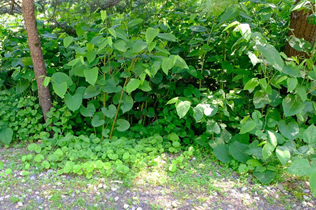Brush Cutter Blade Application
7th May 2023
Brush cutter Blade Applications
Spring has arrived and you plan on finally tackling the backyard overgrowth, but what brush cutter blade do you need? Choosing the right blade helps get the job done faster and safer while using the wrong blade for the job could cause injury and/or damage to your trimmer.
Before installing a blade on your machine, please consult with the manufacturer to ensure your model can accept brush cutter blades and that the correct guard and blade kit are installed to help prevent injury! Nothing in this article is meant to replace instructions or recommended products provided in a product manual or safety training video. Always read your product manuals before use while complying with the safety standards. Brush cutters are extremely dangerous; proper training and safety gear is highly recommended before using. If you are ever unsure, please contact the manufacturer of the brush cutter and abide by their recommendation.
We can safely break the brush cutter blades into 4 applications dependent on tooth count of the blade.
1) 8 or Fewer Teeth
Blades
with 8 or fewer teeth were designed specifically for high weeds and/or grass  applications.
These blades work great with out causing any excessive vibration or threat of
damage to your trimmers shaft or gear head. Weeds and grass typically do not have
enough resistance which is why these low teeth blades rip right through. The
less teeth will not get clogged up and slow you down. As an added bonus, the 3
and 4 tooth blades are able to be flipped to get double life from the blade.
applications.
These blades work great with out causing any excessive vibration or threat of
damage to your trimmers shaft or gear head. Weeds and grass typically do not have
enough resistance which is why these low teeth blades rip right through. The
less teeth will not get clogged up and slow you down. As an added bonus, the 3
and 4 tooth blades are able to be flipped to get double life from the blade.
2) 9 – 40 Teeth
 The next tooth range allows to cut thicker
weeds, brush and some smaller shrubs. Cutting brush and shrubs requires more
teeth than grass because there will be a greater resistance on your machine.
The more teeth allow for a smoother cut through the brush and shrubs but too
many teeth will not cut as well. A blade with 8 or fewer teeth would continue
to bounce off the brush and could cause damage to your trimmer while also increasing
the risk for kickback.
The next tooth range allows to cut thicker
weeds, brush and some smaller shrubs. Cutting brush and shrubs requires more
teeth than grass because there will be a greater resistance on your machine.
The more teeth allow for a smoother cut through the brush and shrubs but too
many teeth will not cut as well. A blade with 8 or fewer teeth would continue
to bounce off the brush and could cause damage to your trimmer while also increasing
the risk for kickback.
3) Over 40 Teeth

These blades are made for working through tougher brush and small trees. These are typically used when clearing some larger properties filled with small trees, saplings and general brush. The more teeth act similar to a circular saw blade allowing the trimmer to saw through smaller trees. The more teeth a blade has, the smoother the cut through the saplings and trees will be.
4) Chainsaw Tooth Blades
a. Some of the most popular blades on the market have chainsaw teeth on them. They are usually riveted on the blade or an entire loop of chain is put around the outside. These blades fall into Category 2 and 3 on the application chart. They have a lower tooth count but the chainsaw tooth designs allow it to excel on small trees and saplings.
